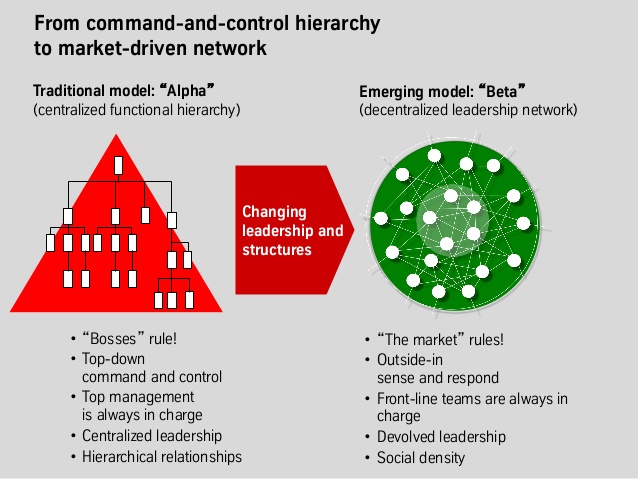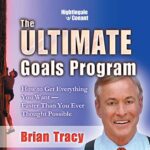
Moving Forward Seminar for Managers by Holly from Corporate Edge
Quick notes:
– Great culture at work has to be created.
– Replace ‘yeah, but’ and change it to ‘and…so’.
The Surprising Truth About What Motivates Us | Dan Pink
4 Reasons for Poor Performance SAMPLE (Knowledge, Skills, Tools, Desire)
Amazon #ads
DAY ONE
Session 1: Leadership at ******
– Creating an Environment for Success
Leaders have the ability to inspire and challenge.
– Command and Control to Modern Leader
| Command and Control | High Performance Culture |
| Work for pay | Care for care |
| Transactional | Engagement |
| Fear | Trust |
| Parent-Child | Adult-Adult |
| Compliance | Ownership |

Holly spoke about managers having to spend their first 20 minutes to connect with staff on a personal level and she seemed pretty obsessed with it even after the managers said that there really isn’t an opportunity especially running a 24 hour store with so many customers coming and going. Most managers do find time to connect but not the first 20 minutes. Also a 40% change in behaviour depends on the managers mood/behaviour.
– The Customer Comes Second
Business Success Cycle: Leader > Team > Customer > Success. Which means that to the manager the team comes FIRST. We can never expect our people to treat the customer any differently than we treat them – Sam Walton.
– The Role of a Leader vs a Team Member/Management
Leadership is about inspiring people so they want to follow. Management is about managing things. A good leader can engage in a debate frankly and thoroughly, knowing that at the end, he and the other side must be closer, and thus emerge stronger – Nelson Mandela.
– The 3 Areas of Leadership Performance
1 – Set and demonstrate outstanding benchmarks for behaviour and results.
2 – Build an outstanding team.
3 – Develop outstanding individuals.
Ask yourself where your strengths are regarding these. What 2 areas do you need to focus on and what behaviours do you need to start enacting more to achieve it.
– Situational Leadership (5 Caps & Skill-Will four quadrants)
A leader has 5 caps to wear depending on various roles and required outcomes.
1 – Leader. Create an inspiring and compelling vision for the team. Set benchmarks for behaviour and performance. Be a role model. Make the tough decisions.
2 – Entrepreneur. Provides ideas that will achieve the vision. Take action. Create environment for growth and empowerment. Develop strategies that grows the business.
3 – Manager. Manage things, processes, procedures, policies, systems, structure, events, compliance. Delegation vs. abdication. Communicating expectations of a person’s role rather than just a job, delegating responsibilities not tasks. Follow up. You get what you inspect, not expect. Communication structure and weekly one-on-ones. Planning and organising are key functions.
4 – Coach (asking). Provides the challenges. Creates awareness of opportunities and new possibilities. Develops people within the team to perform at their best through coaching and feedback. The coach focuses on potential rather than performance.
5 – Mentor (telling). Provides advice and support when asked on areas of experience and experience – story telling. Creates an environment where people believe that the leader ‘cares for my needs’. Has trust and respect, listens and is a sounding board. A mentor is selected.
What is your strongest cap and why? Which 2 caps do you need to develop more and how will that help? What will be the most challenging?
– Skill-Will Matrix
|
High Skill | Cautious Achiever
Leader Cap Inspire | Enthusiastic Achiever
Coach Cap Delegate |
| Low
Skill |
Unhappy Amateur Mentor Cap Guide |
Keen Amateur Manager Cap Direct |
| Low Will |
High Will |
Where are various members of your team and what caps do you need to wear.
Session 2: Effective Communication
– Effective Delegation
7 Degrees of Delegation
1 – Wait to be told or do exactly what I say.
2 – You look into this, provide analysis, I decide.
3 – You provide analysis and recommendations, I’ll decide.
4 – You decide, let me know your decision but wait for my go ahead.
5 – You decide, inform me, go ahead unless I say otherwise.
6 – Decide, take action, inform.
7 – Decide and take action.
Before delegating
1 – Define the task.
2 – Describe the task.
3 – Who.
4 – Assess ability – development need? SKILL/WILL
5 – Decide degree of delegation.
Delegating
1 – Inform individual – Stewardship delegation where you focus on results not methods (win:win)
2 – Desired outcomes.
3 – Guidelines / Agree metrics (SMART)
4 – Resources
5 – Accountability / Support / Feedback
6 – Consequences (good and bad)
– Basic Effective Communication
4 Keys to Effective Leader Communication
1 – Speak from the heart. Care, genuine, honest, passion, emotion, connect personal vulnerability.
2 – Use simple words so there are no misunderstandings.
3 – Keep it to 3-4 points.
4 – Link it to the ’cause’.
Remember communication is 55% body, 38% tone, 7% words.
– Communicating Strategy & Expectations
Reorder as you need.
Passions (Why) e.g. As you know our purpose or vision as an organisation is …
Clarity (How) e.g. Our strategy is …
Focus (What) e.g. To support this, our role and vision as a team is …
… this is the business expectation of us.
– Accountability (Inspect)
Shift focus from
Task > Outcomes
Process > People
Compliance > Customer
– The Purpose & Role of Feedback
The main reason is to improve the persons awareness therefore all feedback is positive.
Perception (Intent) How I want or believe others see me <—– Self Awareness Gap —–> Reality (Impact) how my behaviour impacts others.
2 Types of Feedback
1 – Constructive positive. This is aimed at reinforcing positive behaviours. Behaviours = Continue.
2 – Constructive corrective/negative. This is aimed at changing negative behaviours. Behaviours = Start, change, stop.
Feedback vs. Praise. Praise is taken positively and does not reinforce anything. Good job keep it up vs. I appreciate what you do, you contribute, great questions, timely reports. It’s more specific and nurtures the good.
Feedback vs. Criticism. Criticism is taken personal while feedback is about behaviour and is constructive. You were very unprofessional vs. I noticed customer waiting and you didn’t acknowledge them. I see you were busy. In future it’s important that you make eye contact and acknowledge them.
3 Golden rules of feedback.
1 – Specific. Focus on time, place, meeting, email, phone call, date, etc.
2 – Fact based. Cannot be based on someone’s perception or view.
3 – Behaviour. Based on what people say or do.
Because of this you can’t give feedback on attitude. The right balance is to mix both positive and corrective feedback. Turn the feedback sandwich into a lasagna.
Giving feedback using the PEER model
P – Permission. Ask the person for permission to give them some feed back so that they are open and actively listen. If they’re not available say – ‘It’s really important that we have this conversation, when would be a good time?’.
E – Example. Use above 3 golden rules.
E – Effect/Impact. Explain what impact this has on their performance and environment.
R – Result. What is the change in behaviour or continuation in behaviour you like to see.
Receiving negative feedback – 5 Stages of Reaction
Shock & Surprise > Rejection > Denial > Reflection > Acceptance
Session 3: Effective Performance Conversations
– Four Personality Styles & Adjusting the Communication (not covered)

– Asking Quality Questions
The questions you ask will be answered (loudly or mentally). Think pink elephant.
1 – Open questions start with What When Who How Where Why. Require descriptive answers and promote awareness and responsibility. Good to get further information.
2 – Closed questions start with Is Can Do have. Yes or no answers. They are OK to ask. Good to confirm facts.
– Coaching Tool (GROW model)
G – Goals. Establish a purpose. Use SMART (Specific, Measurable, Achievable, Realistic/Relevance, Time bound.
R – Reality. Ensure nature, scope and overall difference between goal being set and the reality of the current situation.
O – Options. encourage coachee to explore alternatives and possible action plans they could take.
W – Way > Forward. Choose a course of action and explain why it will succeed. Test commitment and understand barriers. Be specific on time and lock in the next coaching session.
Useful GROW questions
Goal
– What current issues are you facing?
– What objectives are needed to address the issues?
– How will you know when you achieve it?
– What would success look like and would others see it that way?
– What would you like from me to achieve this?
– What will give you the most value to talk about?
– What do you need to walk away from this conversation feeling it’s well spent time?
– What would you like to be different when you leave this session?
– What would you like to happen that is not happening now?
Reality
– What effect does this have?
– How might you have contributed to this situation?
– What other factors are relevant?
– How do you think they see this situation?
– What have you tired so far?
– What are the 3 most significant factors contributing to this and how would you rank them?
Options
– What are your options and what can you do to change it?
– What action have you used in similar situations?
– What would the best case scenario look like?
– What else could you do? What else? What else?
– What if some constraints were removed?
– What are the ups and downs of each option?
– Who might be able to help?
What, Will, When
– What are the next steps?
– Exactly what will you do?
– Which options can be achieved in the time frame?
– What might get in the way?
– What support do you need?
– How and when will you enlist the support?
– What are the consequences of not doing it?
– When will these actions be completed?
– What would you like from me in terms of accountability?
Amazon #ads





